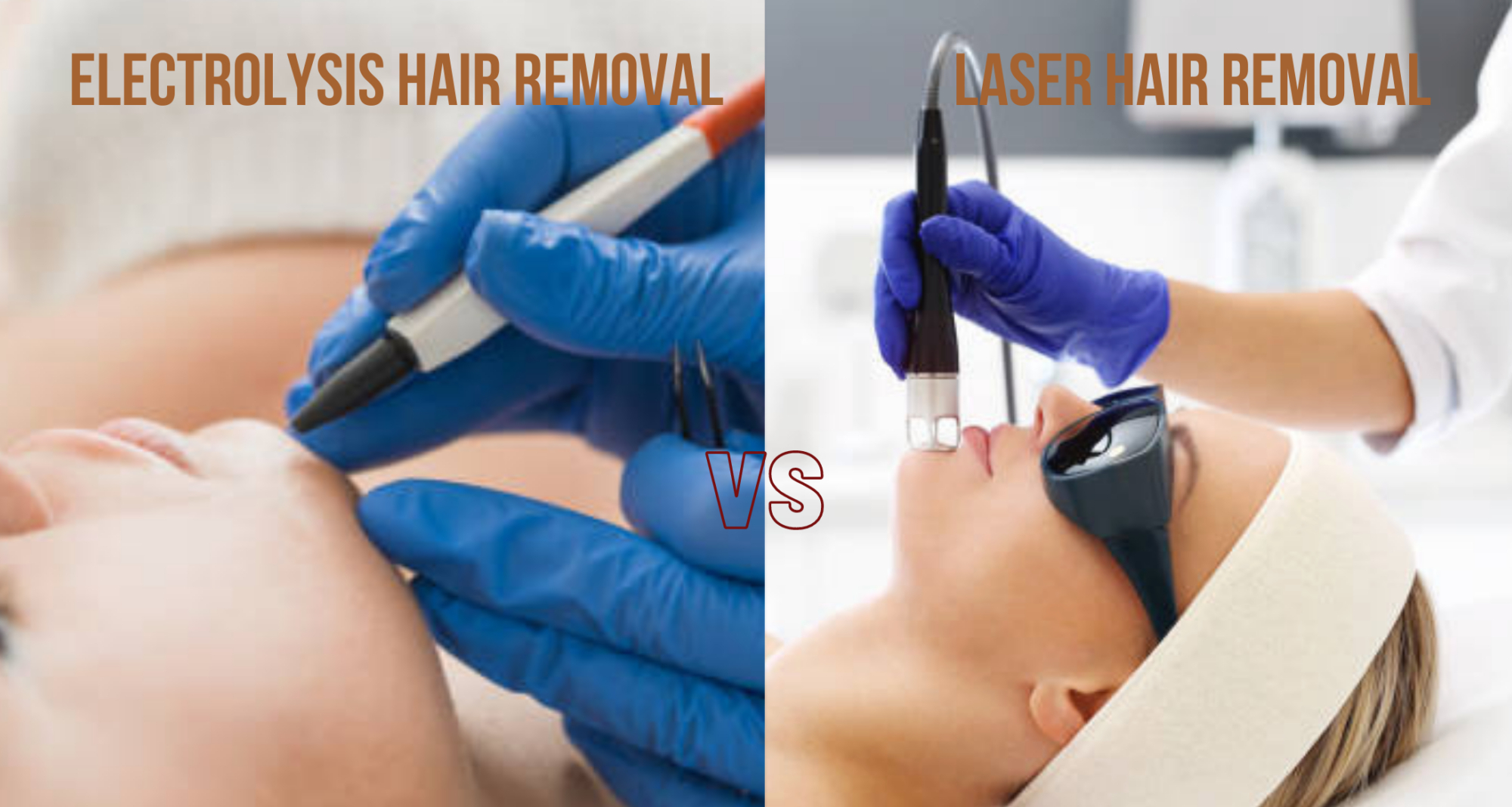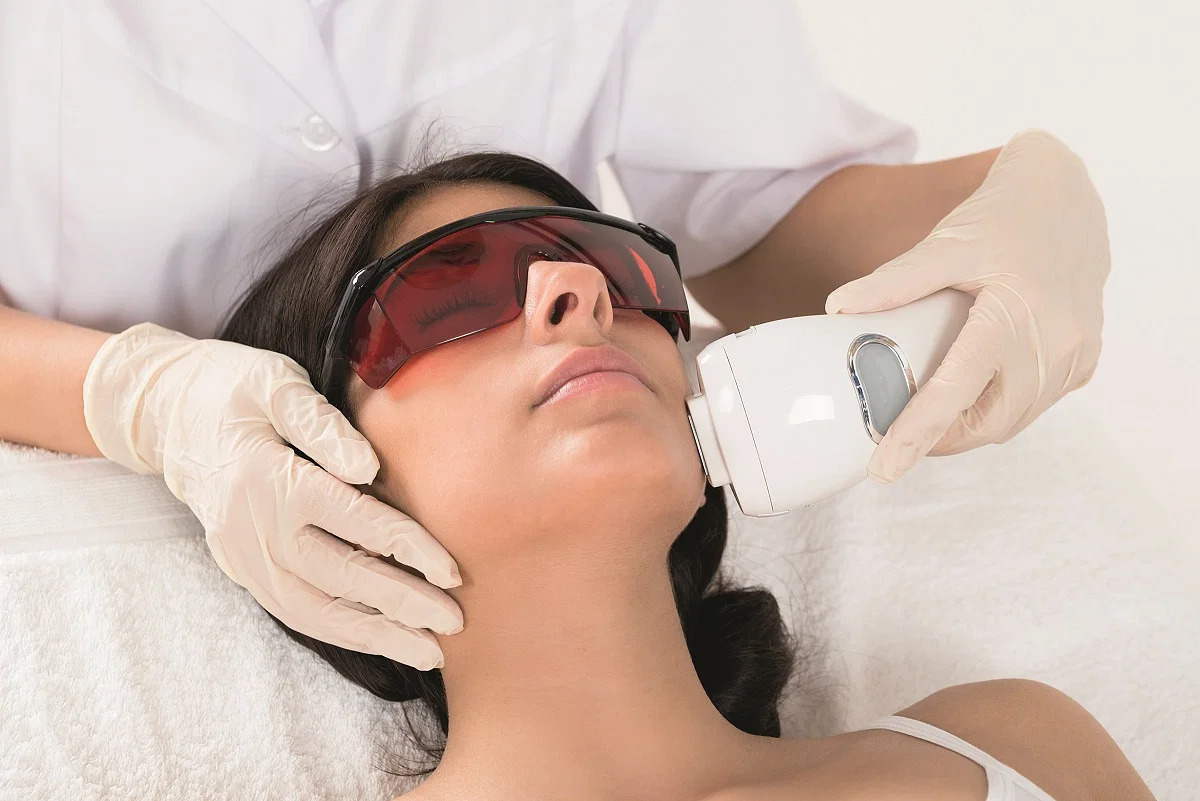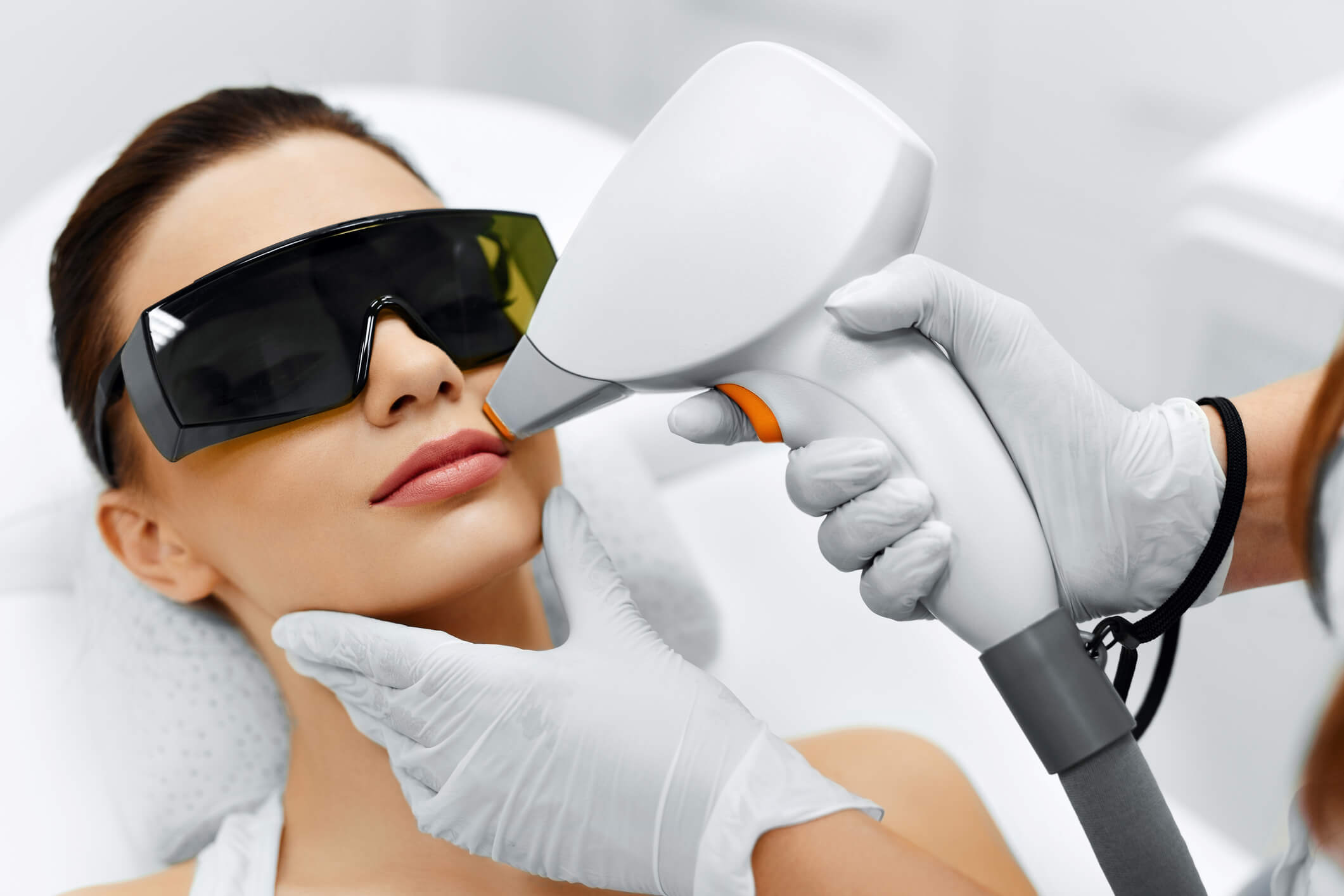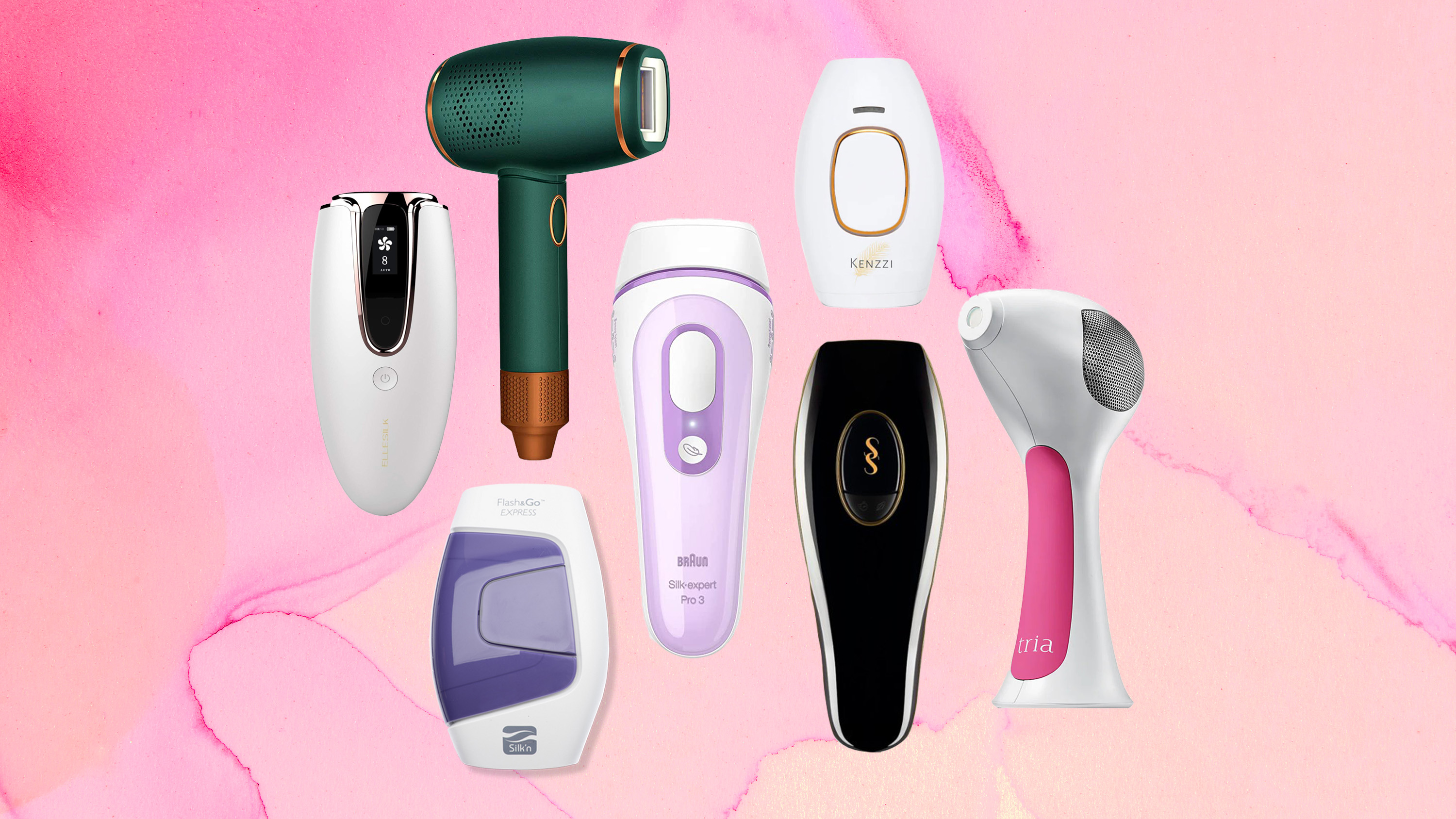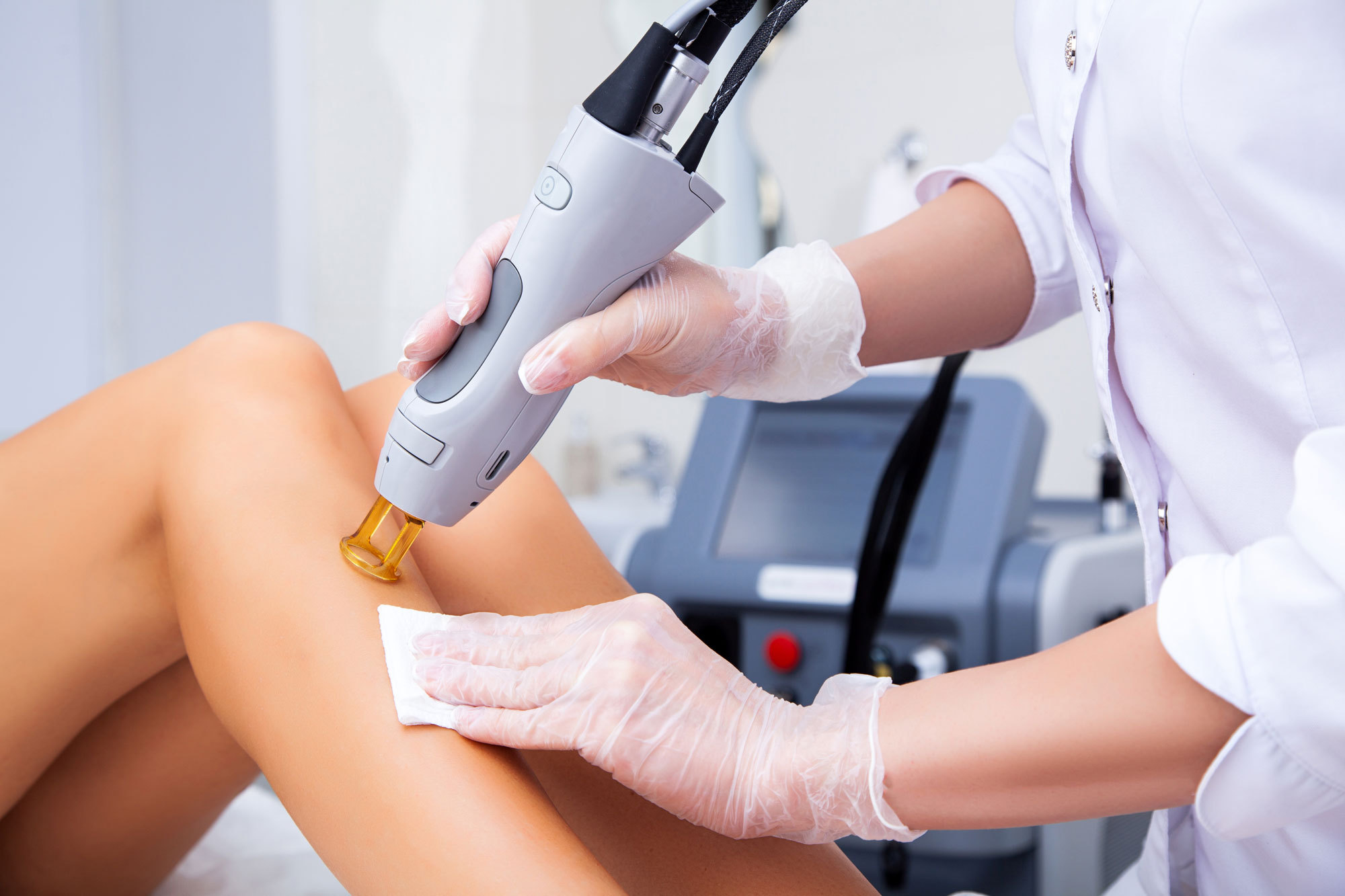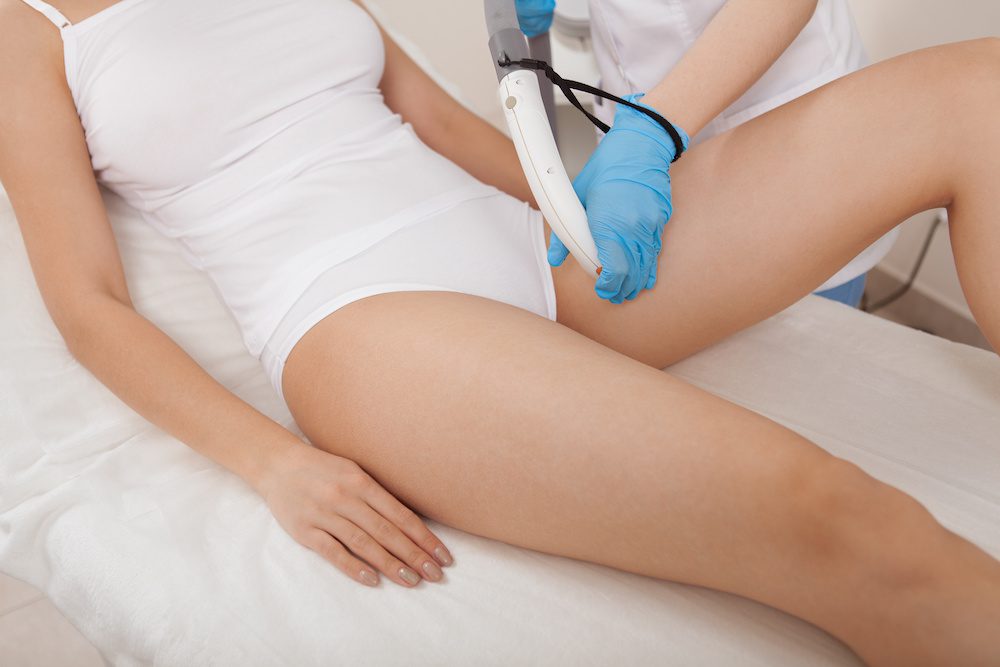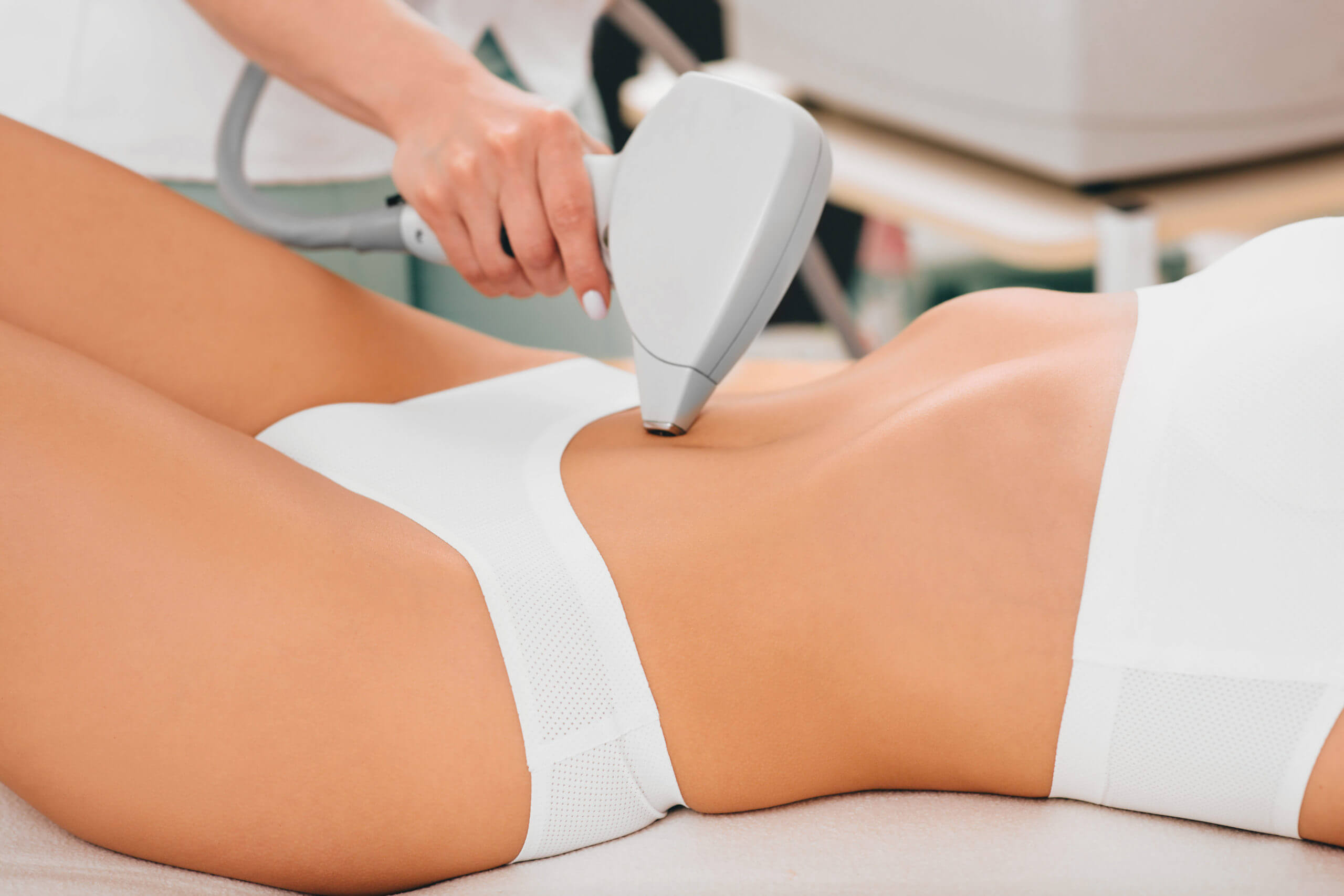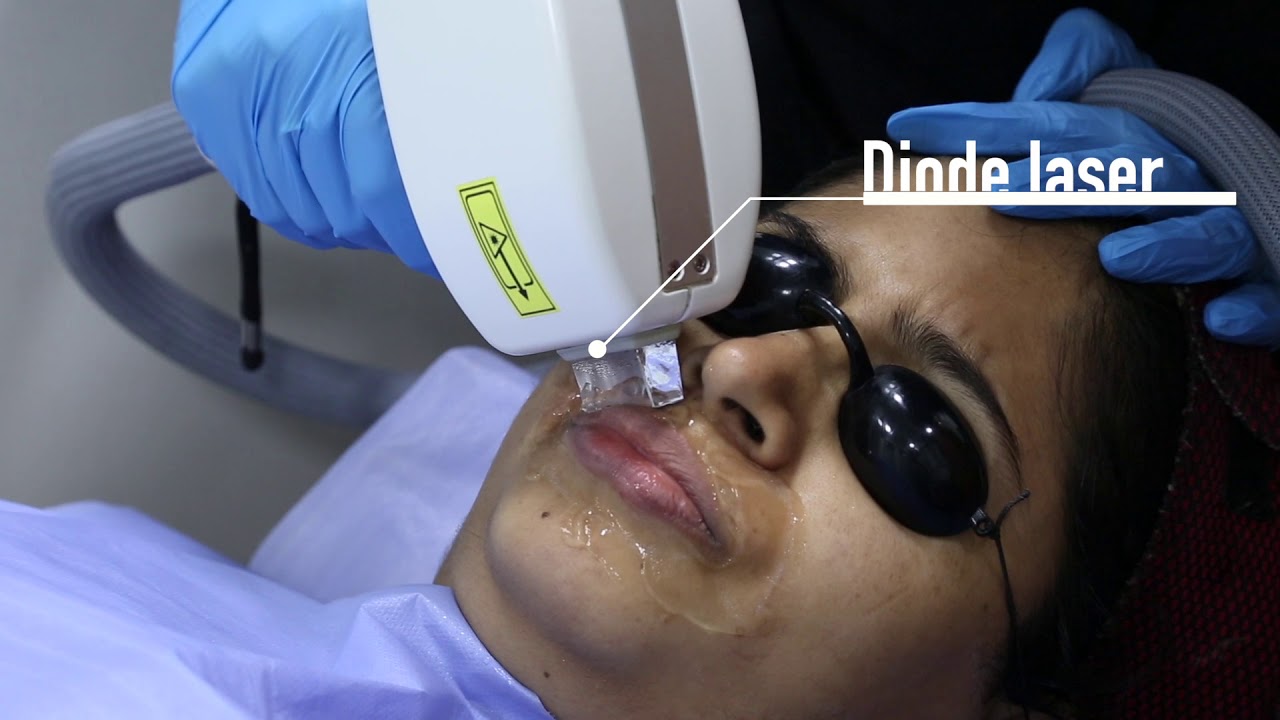

FAQs
What Is Diode Laser Hair Removal
Modified: September 23, 2023
Discover the answers to all your general questions about diode laser hair removal. Learn about the benefits, process, and effectiveness of this popular hair removal method.
(Many of the links in this article redirect to a specific reviewed product. Your purchase of these products through affiliate links helps to generate commission for Under-tec.com, at no extra cost. Learn more)
Table of Contents
- Introduction
- How Diode Laser Hair Removal Works
- Benefits of Diode Laser Hair Removal
- Risks and Side Effects
- Preparing for Diode Laser Hair Removal
- What to Expect During the Procedure
- Aftercare and Recovery
- Number of Sessions Required
- Cost of Diode Laser Hair Removal
- Alternative Hair Removal Methods
- Conclusion
Introduction
Welcome to the world of diode laser hair removal, a revolutionary method of removing unwanted hair that offers long-lasting results and a smoother, hair-free appearance. In today’s society, individuals are increasingly seeking effective and permanent hair removal solutions, and diode laser hair removal has emerged as one of the most popular options.
Diode laser hair removal is a non-invasive procedure that uses a concentrated beam of light to target and destroy the pigment in hair follicles, resulting in the reduction or permanent removal of unwanted hair. Unlike traditional hair removal methods such as shaving, waxing, or plucking, diode laser hair removal offers a more convenient and efficient solution.
The diode laser system emits a specific wavelength of light that is absorbed by the pigment in the hair follicles. This process, known as selective photothermolysis, allows the laser energy to penetrate the skin and target the hair follicles without damaging the surrounding tissues. As a result, the hair follicles are effectively damaged, inhibiting future hair growth.
One of the key advantages of diode laser hair removal is its ability to target a wide range of skin and hair types. Unlike other laser hair removal methods that may be less effective on darker skin tones or lighter hair colors, the diode laser can effectively treat individuals with different skin tones and hair colors, making it a versatile and inclusive option for various individuals.
Moreover, diode laser hair removal offers a more comfortable and pain-free experience compared to traditional hair removal methods. The procedure typically involves the use of a cooling mechanism that cools the skin before, during, and after the laser pulses, providing a soothing sensation and minimizing any discomfort.
In this comprehensive guide, we will delve deeper into the workings of diode laser hair removal, explore its benefits and potential side effects, discuss how to prepare for the procedure, provide insights into the treatment process, and offer tips for aftercare and recovery. Additionally, we will discuss the number of sessions required for optimal results, the cost associated with diode laser hair removal, and alternative hair removal methods you may consider. So, let us embark on this journey to learn more about the remarkable world of diode laser hair removal!
How Diode Laser Hair Removal Works
Diode laser hair removal works by targeting and damaging the hair follicles with the use of a concentrated beam of light. This process, known as selective photothermolysis, is based on the principle that the laser energy is absorbed by the pigment in the hair follicles, leading to their destruction.
During the procedure, a handheld device is used to deliver the laser energy to the treatment area. The diode laser emits a specific wavelength of light that is highly absorbed by the melanin, or pigment, in the hair follicles. As the light energy is absorbed, it is converted into heat, damaging the follicles while leaving the surrounding skin unharmed.
To ensure effective treatment, the targeted area is often shaved beforehand to remove any surface hair. This allows the laser energy to penetrate the hair follicles directly, maximizing the effectiveness of the procedure.
It’s important to note that diode laser hair removal is most effective on hair that is in the active growth phase, known as the anagen phase. This is because the hair follicles in this stage contain the highest amount of pigment, making them more receptive to the laser energy. However, not all hair follicles are in the same stage of growth at any given time. This is why multiple treatment sessions are usually required to target all the hair follicles in the desired area.
Over the course of several treatments, the damaged hair follicles gradually become incapable of producing new hairs. As a result, the treated area will experience a significant reduction in hair growth, leading to long-lasting results and smoother skin.
It’s important to keep in mind that diode laser hair removal is a gradual process, and results may vary depending on various factors such as the individual’s hair and skin type, hormonal changes, and treatment consistency. Some individuals may require touch-up sessions in the future to maintain the desired results.
In the next section, we will explore the numerous benefits of diode laser hair removal and why it has become a preferred choice for many individuals seeking effective and long-lasting hair removal solutions.
Benefits of Diode Laser Hair Removal
Diode laser hair removal offers a range of benefits that make it a popular choice for individuals seeking a more permanent and convenient hair removal method. Let’s explore some of the advantages of diode laser hair removal:
- Efficiency: Diode laser hair removal is a highly efficient method of hair removal. The laser targets multiple hair follicles simultaneously, making it possible to treat large areas of the body in a relatively short amount of time. This makes it a time-saving option for those with busy schedules.
- Long-lasting results: Unlike temporary hair removal methods such as shaving or waxing, diode laser hair removal provides long-lasting results. Since the hair follicles are damaged during the treatment, the regrowth is significantly reduced, and in some cases, the hair may not grow back at all.
- Versatility: Diode laser hair removal can be used on various skin types and hair colors. Unlike some other laser hair removal methods, diode lasers are effective on both dark and light skin tones and can target different hair colors, including lighter and finer hairs. This versatility makes it suitable for a wide range of individuals.
- Minimal discomfort: Diode laser treatments are generally well-tolerated, with minimal discomfort. Advanced diode laser devices incorporate cooling systems to keep the skin cool during the procedure, reducing any potential discomfort or pain. Most individuals describe the sensation as a mild tingling or snapping feeling.
- Precision targeting: The diode laser technology allows for precise targeting of the desired treatment area. The handheld device used in the procedure can be adjusted to deliver the laser energy to specific areas, ensuring that only the hair follicles in the target area are affected, while leaving the surrounding skin unharmed.
- No downtime: One of the advantages of diode laser hair removal is that it requires no downtime. After the procedure, individuals can resume their daily activities immediately. Some may experience mild redness or sensitivity in the treated area, but these effects typically subside within a few hours.
These benefits, combined with the effectiveness and compared to other hair removal methods, make diode laser hair removal a popular choice among individuals looking for a reliable and long-lasting solution.
Now that we have explored the advantages of diode laser hair removal, let’s delve into the potential risks and side effects associated with this procedure to help you make an informed decision.
Risks and Side Effects
While diode laser hair removal is generally considered safe and well-tolerated, it’s important to be aware of the potential risks and side effects associated with the procedure. Understanding these risks can help you make an informed decision and ensure that you are prepared for any potential outcomes.
Common side effects of diode laser hair removal may include:
- Redness and irritation: It is common to experience mild redness and irritation in the treated area immediately after the procedure. This is usually temporary and subsides within a few hours. Your healthcare professional may recommend applying a soothing cream or gel to alleviate any discomfort.
- Skin discoloration: In some cases, temporary skin discoloration may occur after diode laser hair removal. This may manifest as hyperpigmentation (darkening of the skin) or hypopigmentation (lightening of the skin). These changes in skin color are usually temporary and resolve on their own over time.
- Skin sensitivity: It is normal for the treated area to feel slightly more sensitive after the procedure. Your skin may feel tender or have a slight sunburn-like sensation. This sensitivity typically subsides within a few hours to a few days.
- Burns: Although rare, burns can occur as a result of incorrect laser settings or improper technique during the procedure. To minimize the risk of burns, it is crucial to choose a qualified and experienced healthcare professional who follows safety protocols and understands your specific skin and hair type.
It’s important to note that in rare cases, more severe side effects such as scarring, blistering, or infection can occur. These are typically rare and are more likely to occur if the recommended aftercare instructions are not followed or if the treatment is performed by an inexperienced or unqualified individual.
It is crucial to have a consultation with a healthcare professional before undergoing diode laser hair removal to discuss any underlying medical conditions, medications, or skin sensitivities that may increase your risk of complications or side effects.
During the consultation, the healthcare professional will also assess your skin and hair type to determine the most appropriate settings for the laser treatment. This personalized approach helps minimize the risk of side effects and ensures optimal results.
By understanding the potential risks and side effects associated with diode laser hair removal, you can have realistic expectations and make an informed decision about whether this procedure is right for you. In the next section, we will explore how to prepare for diode laser hair removal to ensure optimal results.
Preparing for Diode Laser Hair Removal
Before undergoing diode laser hair removal, it is important to properly prepare for the procedure to ensure the best possible results and reduce the risk of complications. Here are some steps to follow when preparing for diode laser hair removal:
- Avoid sun exposure: It is recommended to avoid sun exposure, including tanning beds and self-tanning products, for at least two weeks before your scheduled appointment. Sun exposure can make your skin more sensitive to the laser and increase the risk of side effects such as burns or skin discoloration.
- Avoid other hair removal methods: To ensure that the diode laser can effectively target the hair follicles, you should avoid plucking, tweezing, waxing, or any other hair removal methods that remove the hair from the root for about four to six weeks prior to treatment. However, shaving is allowed and even encouraged, as it helps to maintain the targeted area clean and smooth.
- Cleanse the treatment area: On the day of your appointment, ensure that the treatment area is clean and free of any lotions, oils, or cosmetics. This helps to ensure better absorption of the laser energy and improves the effectiveness of the treatment.
- Inform your healthcare professional: During your consultation, make sure to inform your healthcare professional about any medications, supplements, or topical creams you are using. Some medications may make your skin more sensitive to the laser or interfere with the treatment process. Your healthcare professional will provide specific instructions based on your individual circumstances.
- Avoid certain skincare products: Leading up to your diode laser hair removal session, it is advisable to avoid using products that may irritate your skin. This includes products containing retinoids, glycolic acid, or other exfoliating agents. Your healthcare professional will provide you with detailed instructions on any skincare restrictions you should follow.
- Discuss any concerns or questions: Before the treatment, take the opportunity to discuss any concerns or ask any questions you may have with your healthcare professional. They will explain the procedure in detail, discuss expected outcomes, and address any specific concerns you may have.
By following these preparation tips, you can help optimize the results of your diode laser hair removal treatment and minimize the risk of any potential complications.
Coming up next, we will dive into the details of what to expect during the diode laser hair removal procedure, so you can feel confident and informed about the treatment process.
What to Expect During the Procedure
During a diode laser hair removal procedure, you can expect a straightforward and relatively comfortable experience. Here is an overview of what to expect during the treatment:
- Preparation: Before the procedure, the treatment area will be cleansed, and any excess hair may be shaved to ensure the laser energy can directly target the hair follicles. Protective eyewear will be provided to shield your eyes from the laser light.
- Positioning: You will be positioned comfortably, either lying down or sitting, depending on the area being treated. The healthcare professional will adjust the laser device and set the appropriate parameters based on your skin and hair type.
- Laser application: Once the laser is ready, the healthcare professional will begin applying the laser pulses to the treatment area. The laser emits short bursts of light that target the hair follicles, selectively heating them without causing damage to the surrounding skin.
- Sensations: During the procedure, you may experience a sensation often described as a mild tingling or snapping feeling as the laser pulses are applied. Some individuals may also feel a cooling sensation on the skin, depending on the cooling mechanism integrated into the laser device.
- Applying cooling measures: To minimize any discomfort or heat sensation, the healthcare professional may use a cooling mechanism to cool the skin before, during, and after the laser pulses. This helps to soothe the skin and enhance the overall comfort of the procedure.
- Duration: The duration of a diode laser hair removal session can vary depending on the size of the treatment area. Smaller areas like the upper lip or underarms may take only a few minutes, while larger areas like the legs or back may take up to an hour. Your healthcare professional will provide a more accurate estimate during the consultation.
- Post-procedure care: Once the treatment is complete, your healthcare professional may apply a soothing gel or lotion to the treated area. They will also provide you with specific aftercare instructions, which may include avoiding sun exposure, using sunscreen, and avoiding hot showers or baths for a certain period of time.
It’s important to note that the number of sessions required to achieve desired results can vary depending on factors such as hair type, skin type, and the specific area being treated. Most individuals require multiple sessions, typically spaced several weeks apart, to effectively target different hair growth cycles and achieve optimal results.
Throughout the procedure, it is essential to communicate any discomfort or concerns with your healthcare professional. They can adjust the settings or provide additional measures to enhance your comfort and ensure the best possible outcome.
Now that you have a good understanding of what to expect during a diode laser hair removal session, it’s time to shift our focus to aftercare and recovery, which play a crucial role in achieving successful outcomes.
Aftercare and Recovery
After undergoing a diode laser hair removal procedure, it is important to follow proper aftercare instructions to ensure a smooth recovery and optimize the results. Here are some essential guidelines to follow during the aftercare period:
- Avoid sun exposure: Protect the treated area from sun exposure for at least two weeks following the procedure. Sun exposure can increase the risk of complications and may cause skin discoloration. If you must be in the sun, apply a broad-spectrum sunscreen with a high SPF to the treated area.
- Avoid hot water and sweating: For the first 24-48 hours after treatment, avoid hot showers, baths, saunas, and activities that cause excessive sweating. This helps to prevent irritation and potential infection in the treated area.
- Keep the area clean and moisturized: Gently cleanse the treated area with a mild cleanser and cool water. Pat the area dry and apply a soothing moisturizer to keep the skin hydrated. Avoid using harsh or irritating skincare products on the treated area.
- Avoid exfoliation and harsh treatments: Refrain from using exfoliating scrubs, chemical peels, or other harsh treatments on the treated area for at least one week after the procedure. These treatments can further irritate the skin and increase the risk of adverse reactions.
- Avoid plucking or waxing: While hairs will gradually shed on their own after diode laser hair removal, avoid plucking, tweezing, or waxing the treated area between sessions. Shaving is permissible and can help maintain a smooth appearance.
- Follow up with scheduled sessions: To achieve the best results, it is essential to follow the recommended treatment schedule. Your healthcare professional will advise you on the optimal timeframe between sessions based on your individual needs. Be consistent with your appointments to ensure maximum efficacy.
- Consult your healthcare professional for concerns: If you experience any unusual or concerning symptoms after the procedure, such as severe pain, blistering, or signs of infection, contact your healthcare professional immediately. They can assess the situation and provide appropriate guidance or treatment.
Every individual’s recovery process may vary slightly, but following these aftercare instructions will help minimize any potential complications and promote the best possible results.
It’s important to note that the treated area may experience some temporary changes, such as redness, swelling, or mild sensitivity. These effects are normal and should subside within a few hours to a few days. If you have any concerns about your recovery, do not hesitate to reach out to your healthcare professional for guidance and reassurance.
Now that we have covered the aftercare and recovery aspects, let’s delve into the number of sessions typically required for optimal results in the next section.
Number of Sessions Required
The number of sessions required for diode laser hair removal can vary depending on several factors, including your hair type, the treatment area, and your individual response to the treatment. It is important to understand that multiple sessions are typically needed to achieve optimal and long-lasting results.
On average, most individuals require between six to eight sessions to effectively target the hair follicles and achieve the desired outcome. However, this number can vary from person to person. Some individuals may see significant hair reduction after just a few sessions, while others may need more treatments to achieve the desired results.
The reason multiple sessions are necessary is that hair grows in cycles, with each hair follicle going through different stages of growth at any given time. The diode laser can only effectively target hair follicles in the active growth phase, known as the anagen phase. The other follicles in the dormant or shedding phase are not responsive to the laser energy.
By spacing out the treatment sessions, usually with intervals of four to six weeks, subsequent sessions can target new hair follicles that have entered the active growth phase. This ensures that all hair follicles in the treated area are effectively treated and reduces the chances of any regrowth.
It is crucial to adhere to the recommended treatment schedule provided by your healthcare professional. Consistency in attending the scheduled sessions is key to achieving optimal results. Missing sessions or extending the time between treatments may compromise the efficacy of the treatment and may require additional sessions to reach the desired outcome.
After completing the initial series of sessions, some individuals may require periodic touch-up treatments to maintain the results. The frequency of these touch-up sessions can vary depending on individual hair growth patterns. Your healthcare professional will guide you on the appropriate schedule for touch-up sessions during your initial consultation.
Remember, each individual’s response to diode laser hair removal can vary, and the number of sessions required may differ based on factors such as hair thickness, hair density, hormonal changes, and genetics. It is important to have realistic expectations and consult with your healthcare professional for personalized advice regarding the number of sessions needed to achieve your desired results.
Now that we have discussed the number of sessions required, let’s explore the cost associated with diode laser hair removal in the next section.
Cost of Diode Laser Hair Removal
The cost of diode laser hair removal can vary depending on several factors, including the size of the treatment area, the number of sessions required, and the geographical location of the treatment facility. It’s important to remember that pricing can differ between clinics and practitioners.
Typically, diode laser hair removal is priced per session or as a package that includes multiple sessions. Treatment costs can range from $100 to $500 per session, depending on the size of the treatment area. Larger areas such as the legs or back will generally cost more than smaller areas like the upper lip or underarms.
Most individuals require multiple sessions to achieve optimal results, which may impact the overall cost. Clinics may offer package deals for multiple sessions, providing a more cost-effective option compared to paying for each session individually.
It’s important to see the cost of diode laser hair removal as an investment in long-term hair reduction, compared to the ongoing expenses of temporary hair removal methods such as shaving or waxing. While the upfront cost may seem higher, the long-lasting results of diode laser hair removal can save you time, effort, and money in the long run.
Keep in mind that pricing can also vary depending on the reputation and expertise of the clinic, the technology used, and the qualifications of the healthcare professional performing the procedure. It is crucial to choose a reputable clinic with experienced professionals who prioritize your safety and provide high-quality results.
During your initial consultation, your healthcare professional will assess your specific needs and provide you with an estimate of the number of sessions required and the associated cost. They will also discuss any financing options or payment plans that may be available to make the treatment more affordable for you.
It is important not to compromise on quality or safety when it comes to choosing a clinic for diode laser hair removal. Selecting a reputable and experienced provider may have a higher initial cost, but it can significantly impact the overall success and satisfaction of your treatment.
Now that we have explored the cost aspect of diode laser hair removal, let’s look at some alternative methods of hair removal that you may consider.
Alternative Hair Removal Methods
While diode laser hair removal is an effective and long-lasting solution, there are other hair removal methods available for those who may prefer alternatives. Here are some common alternative hair removal methods:
- Shaving: Shaving is a quick and easy hair removal method that involves using a razor to cut the hair at the surface of the skin. While shaving provides temporary results, it requires frequent maintenance as the hair regrows relatively quickly.
- Waxing: Waxing involves applying hot or cold wax to the skin and pulling it off, along with the hair, in the opposite direction of hair growth. It provides longer-lasting results compared to shaving, as it removes the hair from the root. However, it can be uncomfortable and may cause skin irritation for some individuals.
- Depilatory creams: Depilatory creams, also known as hair removal creams, contain chemicals that dissolve the hair follicles, allowing them to be wiped away. While this method is relatively painless, the results are temporary, and the chemicals may cause skin irritation or sensitivity for some individuals.
- Epilation: Epilation is the process of removing hair from the root using an electrical device that grasps multiple hairs simultaneously and pulls them out. This method provides longer-lasting results compared to shaving and can be used on various areas of the body.
- Laser hair removal: Laser hair removal, similar to diode laser hair removal, targets the hair follicles using a laser to inhibit hair growth. However, different types of lasers may be used, such as Alexandrite, Nd:YAG, or IPL (Intense Pulsed Light) lasers. Laser hair removal is effective but may not be suitable for all skin types or hair colors.
- Electrolysis: Electrolysis is a method that uses an electric current to destroy the hair follicles individually. It is considered a permanent hair removal solution but requires multiple sessions and can be time-consuming, as each hair follicle must be treated individually.
It’s important to note that the effectiveness and suitability of these alternative hair removal methods may vary depending on factors such as hair thickness, skin sensitivity, and individual preferences. It’s always advisable to consult with a healthcare professional or a licensed aesthetician to determine which method is most suitable for your needs and goals.
Each method has its own advantages and disadvantages, and what works best for one person may not work as effectively for another. Consider factors such as the desired duration of hair removal, pain tolerance, convenience, and cost when deciding which method to use.
Before proceeding with any alternative hair removal method, it is important to carefully follow the instructions provided and consider any potential risks or side effects associated with the chosen method. If you have any concerns or questions, consult a healthcare professional or experienced practitioner for personalized advice.
Now that you are familiar with the alternative hair removal methods, let’s summarize the key points we have covered in this guide.
Conclusion
Diode laser hair removal is a highly effective and popular method for achieving long-lasting hair reduction or removal. With its ability to target a wide range of skin tones and hair colors, diode laser hair removal offers versatility and inclusivity to individuals seeking a more permanent and convenient hair removal solution.
Throughout this guide, we have explored how diode laser hair removal works, its numerous benefits, potential risks and side effects, tips for preparing for the procedure, what to expect during the treatment, guidelines for aftercare and recovery, the number of sessions typically required for optimal results, the cost associated with the procedure, and alternative hair removal methods.
It is important to remember that diode laser hair removal is a gradual process that requires multiple sessions to target hair follicles in different growth stages effectively. Consistency in attending the scheduled sessions and following the aftercare instructions provided by your healthcare professional will greatly contribute to achieving the best possible outcomes.
When considering diode laser hair removal, it is crucial to choose a reputable clinic with experienced healthcare professionals who prioritize your safety and well-being. Your provider will assess your specific needs, guide you through the treatment process, and customize the treatment plan to ensure the best results for your unique situation.
While diode laser hair removal may require an upfront investment, it offers long-lasting results and eliminates the need for frequent, temporary hair removal methods. By freeing yourself from the continuous maintenance of shaving, waxing, or other methods, diode laser hair removal can save you time, effort, and money in the long run.
Ultimately, the decision to undergo diode laser hair removal should be a well-informed one based on your preferences, needs, and understanding of the procedure. Consultation with a healthcare professional is essential to discuss your goals, evaluate your skin and hair type, and determine if diode laser hair removal is the most suitable option for you.
We hope that this guide has provided you with valuable insights into the world of diode laser hair removal, empowering you to make an informed decision about your hair removal journey. Remember to consult with a qualified professional to get personalized advice and embark on your path towards smoother, hair-free skin.
